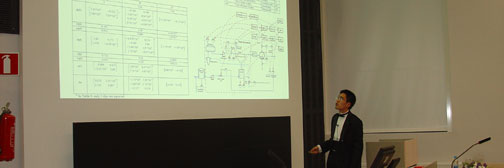| | Year 2013
Rinat LandmanData-Driven Causal Analysis and its Application on a Large Scale Board Machine
In large-scale chemical processes, disturbances can easily propagate through the process units and thereby adversely affect the overall process performance. In recent years, causal analysis has played a key role in the diagnosis of plant-wide disturbances. Causal analysis can disclose the root cause and reveal the path in which the disturbance propagated. Data-driven causal analysis utilizes historical process data in the form of time series and examines to what extent the time series influence each other. If directionality between time series is inferred, it is taken as an evidence for a cause-and–effect relationship. Data-driven causal analysis can efficiently complement knowledge-based causal analysis and provide valuable insights on process dynamics with minimal efforts.
The aim of this thesis is to apply several data-based causal analyses on an industrial case study of a paper board machine and to evaluate the effectiveness of each method. The theo-retical part of this thesis provides an overview of the main data-based methods for identifying causal relationships between time series. The experimental part contains a detailed descrip-tion of the process case-study. The analysis focused on the drying section of the board ma-chine due to its importance in the board making process and the high share of faults associat-ed with this section. The time domain and frequency domain methods for detecting causal influences were applied to the investigated case study. The outcome of each method was a causal model in the form of a directed graph describing the influences among the variables in the process. All the methods applied were able to identify the most powerful interactions, however, all methods produced somewhat spurious results, thus, process knowledge was found to be essential in the modelling procedure. In addition, root cause analysis based on the cross-correlation and the frequency domain methods was successfully applied and the root cause of the disturbance was identified.
In the future, other non-linear data-based methods could be employed in order to supple-ment the linear methods applied in this study.
This info last modified 27 Apr 2024 by Jukka Kortela
|

